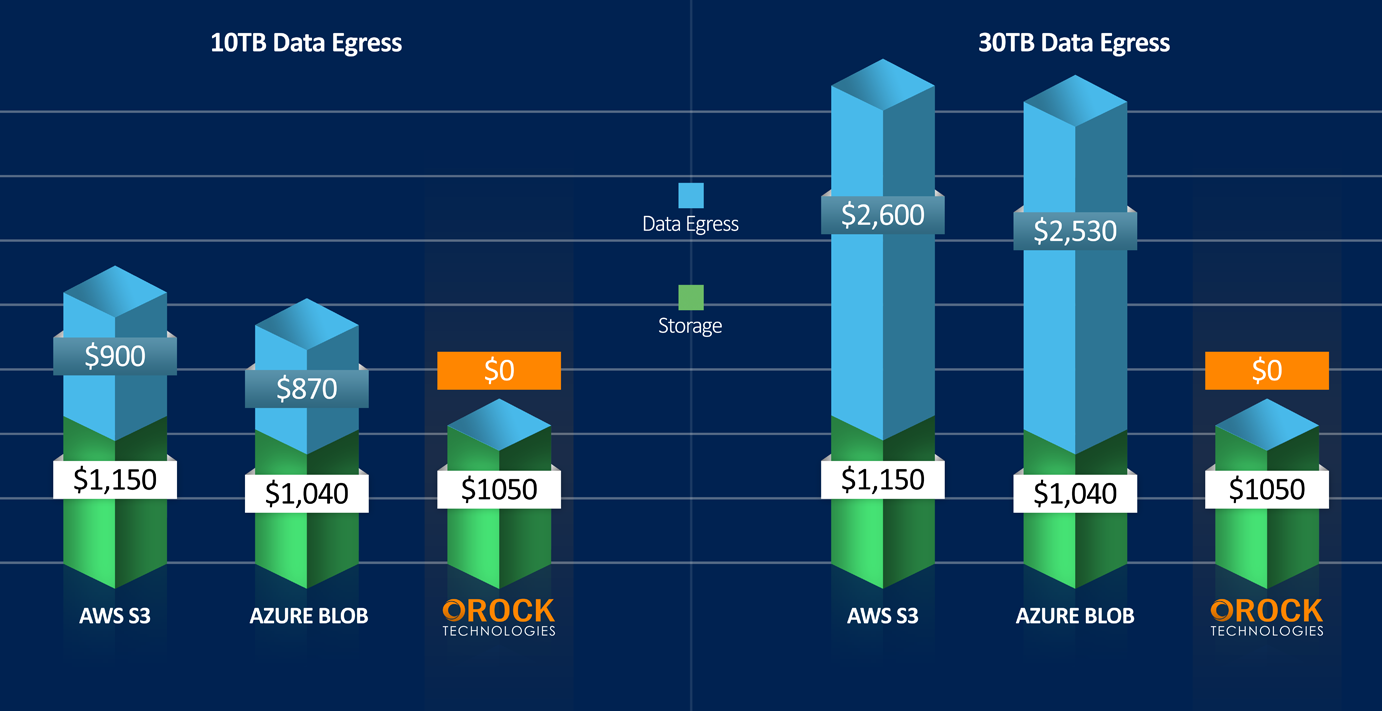By Mario Guarriello & Dustin Jackson
Whether you back up data to tape, the cloud, or both, retrieving this information can be costly.
From March 2020 came multiple reports of NASA having underestimated and underbudgeted the amount of money it would have to pay toward retrieving its data from cloud providers. Major cloud platform providers, such as Amazon, Microsoft, Google, and others, send a bill – usually monthly – charging for each instance of when a customer pulls data out of cloud storage. Known as cloud egress fees, these represent the largest and most unanticipated cost of doing business with public cloud providers. In NASA’s case, the potential retrieval of its 247 petabytes of scientific and other data soared to estimated tens of millions of dollars.
The majority of enterprises employ one or more cloud platform provider. Cloud adoption often takes the shape of AWS, Azure, Google platforms, and various cloud SaaS tools. Your data checking into this cloud is fine anytime, but the data “checking out” can be costly from the major cloud hotels. Tariff “penalties” can soar to unanticipated heights. You have to manage these fees, pay them, and often you can’t predict when you will suddenly need to analyze your own data and then be penalized for looking at it.

The Drawbacks of Magnetic Tape Storage and Most Tape Replacement Cloud Solutions
Meanwhile, other organizations choose to back up information onto magnetic tape drives, usually at a remote site. Tape storage represents a respectable way to ensure you’ve got your data saved in a second, offline place, but getting that data off the reel and back into use can be a pain. This involves maintaining legacy tape drive equipment, shipping storage tapes long distances for data retrieval and rehydration, and a lot of cost, time, and manual effort.
It doesn’t have to be this way. You don’t have to risk the legal and contractual ransoming of your own data. You don’t have to back up data exclusively onto tapes, making the information unusable in the near term.
ORock brings a versatile 3-2-1 backup approach to storage and infrastructure as a service. It’s a simple but sound practice of keeping three copies of data, two replicated copies on premises, one copy offsite (ideally in the cloud). You don’t have to worry about that third instance of data, and you can retrieve your information or files whenever you want without being penalized with cloud exit fees.
ORock doesn’t charge cloud egress fees. We securely store your data and don’t charge you every time you need to access that data. 3-2-1 storage brings the best of on-premise and secure off-site computing and data risk management, without having to rely solely on extraction from backup tapes.
ORockCloud runs on a private fiber optic network for security and control and a flat-rate billing model to eliminate data ingress/egress charges that lead to cost overruns. It’s your data; use it when you want as much as you want without sacrificing security.
ORock complies with privacy and security standards such as HIPAA, PCI DSS, and FedRAMP, and offers domestic NOC and SOC services with U.S. personnel as part of our base pricing as well as a ‘white glove’ approach to the design and maintenance of our clients’ environments.
Learn more about ORock Storage Solutions.
Visit our Technology Partner page.
Read the ORock and Tech Target White Paper titled, “Five Key Considerations When Moving From Tape to Cloud Storage.”





